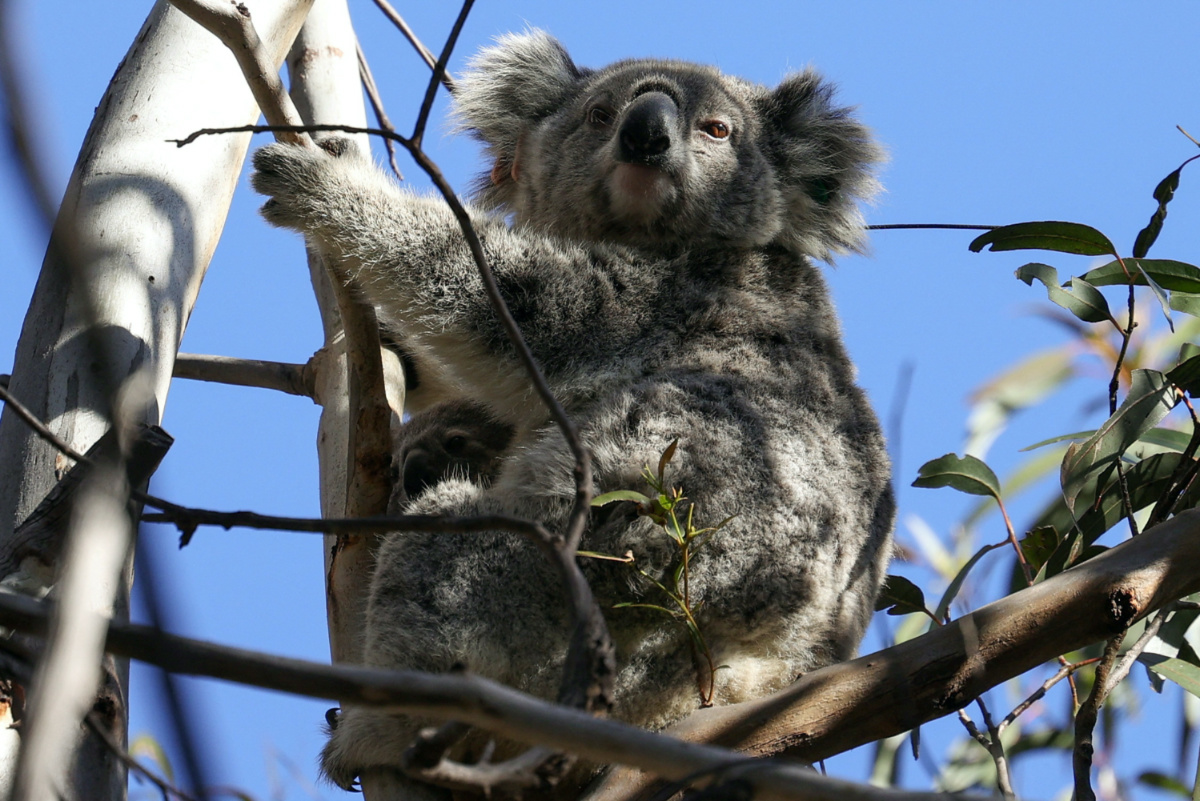Updated: 5pm (AEST)
Melbourne, Australia
Reuters
Australia has lost more mammal species than any other continent and has one of the worst rates of species decline among the world’s richest countries, a five-yearly environmental report card released by the government on Tuesday said.
Animals such as the blue-tailed skink are only known to exist anymore in captivity, while the central rock-rat and Christmas Island flying fox are among mammals considered most at risk of extinction in the next 20 years, largely due to introduced predator species.
The sandalwood tree is also in decline.

A mother koala named Kali and her joey are seen in their natural habitat in an area affected by bushfires, in the Greater Blue Mountains World Heritage Area, near Jenolan, Australia, on 14th September, 2020. PICTURE: Reuters/Loren Elliott/File photo.
The report, which comes after drought, bushfires and floods ravaged Australia over the past five years, said increasing temperatures on land and sea, changing fire and rainfall patterns, rising sea levels and ocean acidification were all having significant impacts that would persist.
“The State of the Environment Report is a shocking document – it tells a story of crisis and decline in Australia’s environment,” Environment Minister Tanya Plibersek said in a statement, adding that the new Labor government would make the environment a priority.
New national parks and protected marine areas would be created, she said, to meet a target to protect 30 per cent of Australia’s land and ocean waters by 2030.
The number of species added to the list of threatened species or in a higher category of risk grew on average by eight per cent from the previous report in 2016, with 533 animals and 1,385 plant species now listed. More than half of those are assessed as endangered or critically endangered.
The numbers would rise sharply as a result of the bushfires that hit in 2019-2020.
The “Black Summer” bushfires killed or displaced an estimated one billion to three billion animals and razed nine per cent of koala habitat.
“Those bushfires were an ecological bomb ripping through southeastern Australia,” Plibersek said in a speech at the National Press Club in Canberra.
Spending of around $A1.7 billion a year is required to revive threatened species, the report said. The new government has committed to spend $A250 million on threatened species, Plibersek said.
The environmental report card painted a dire picture of “poor” and “deteriorating” conditions.
Australia’s average land temperatures have increased by 1.4 degrees Centigrade since the early 20th century.
“Sea levels continue to rise faster than the global average and threaten coastal communities,” the report said.
We rely on our readers to fund Sight's work - become a financial supporter today!
For more information, head to our Subscriber's page.
Many of the country’s most prized ecosystems, such as the Great Barrier Reef which has been hit by mass coral bleaching, are threatened by climate change and environmental extremes, it said.
While coral reef health is declining due to marine heatwaves, the report also highlighted the threat of ocean acidification, caused by absorption of carbon dioxide from the air, which it said was nearing a tipping point that would cause the decline of coral juveniles that are key to reef recovery.
Warming oceans have hit kelp beds off the southeast coast, hurting the abalone and lobster industries, Plibersek said.
Scientists and environmental groups said the report was a wake-up call for the government to step up carbon emissions reductions to curb climate change, overhaul laws to protect habitat and invest more money to protect species.
“There is no more time to waste,” said Jim Radford, a research fellow at La Trobe University.
Plibersek said the government would develop new environmental legislation for 2023 after studying recommendations made by an independent review completed in January of the existing law.
There have been calls by Greens politicians to include a climate trigger in environmental legislation, which could apply when new coal mines or gas projects come up for approval, but Plibersek said the independent review said there were other laws to deal with climate change.
She said “no” when asked whether the fastest way to cut carbon emissions was to block new coal mines.
Keen to protect votes in coal mining regions, Labor has said every new project would be evaluated on its merits.






